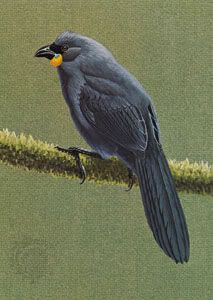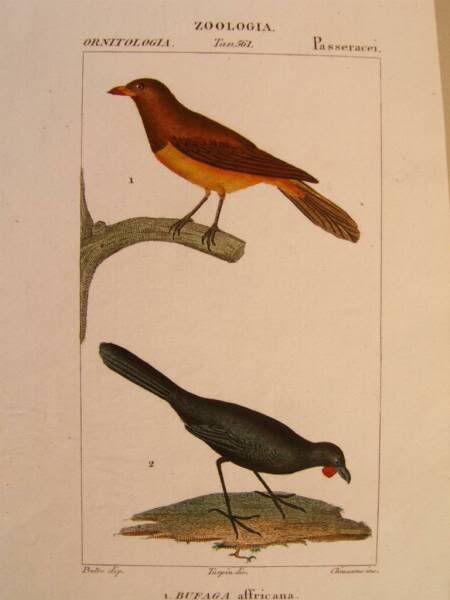|
|
Post by another specialist on Apr 10, 2008 3:34:02 GMT
Some more on the Kokako Chad has posted earlier this week on the South Island Kokako, likewise Loren Coleman over at Cryptomundo also posted on the birds "extinct classification". While Rhys Buckingham has been a long time supporter and research on the South Island Kokako, he has not been alone. Another prominent research, as mentioned in both Chad and Loren's posts, has been Ron Nilsson. Here is an additional piece tied to the "extinct" declare, this comes a day or so after the original declaration. From New Zealand Herald of January 17, 2007 The South Island kokako is now listed as officially extinct, but one of its most dedicated fans is still a believer. Ron Nilsson, of Christchurch, has spent more than 20 years searching for the South Island kokako, which he says he has heard up to 100 times and seen once. Conservation officials yesterday formally declared the South Island kokako extinct, saying there had been no confirmed sightings for more than 40 years. But Mr Nilsson said he saw a bird just five years ago in Westland. "I watched the bird flit across an old forestry road." Mr Nilsson, a self-taught bird expert who has worked for the Wildlife Service, said he knew it was a kokako because of its size and behaviour. "They are bigger than a tui ... like a small native pigeon. It has a peculiar body movement, like a saddleback." Mr Nilsson said some of his colleagues had also seen and heard the elusive bird. He planned to get back into the Fiordland bush in the next month to continue his search. He has also searched remote valleys in Nelson, Westland and Stewart Island for signs of the grey bird with orange wattles at each side of the beak. "There are half a dozen places where it could be." He said that unlike the Department of Conservation, he would not have the audacity to say something was extinct. For more read on at the New Zealand Herald Having performing some research and writing about this bird and its connection to cryptozoology in 1998, it is indeed sad to see that despite finds of kick-ups and occasional sightings, the bird may well be slipping away completely. But, as history has shown with other "extinct" birds, there are times when remnant populations will be found. We can hope this is the case with the South Island Kokako. www.strangeark.com/blog/labels/conservation.html |
|
|
|
Post by another specialist on Apr 10, 2008 3:36:32 GMT
|
|
|
|
Post by sebbe67 on Apr 12, 2008 12:42:28 GMT
DOC probes sighting of 'extinct' kokako
The Nelson Mail (New Zealand) 28 March 2008
Golden Bay amateur ornithologist Alec Milne is convinced he's seen a South
Island kokako a bird recently classified as extinct and heard its distinct
call.
The Department of Conservation is taking the sighting seriously and rangers
will visit the area next week armed with cameras and tape recorders in a bid
to obtain hard evidence of the bird's presence.
A poor flier, the kokako is notably very shy. There have been no confirmed
sightings of the bird for 50 years,
Mr Milne is not the only person to contest its extinct status. Reports of
sightings and calls of the bird were made in the upper Inangahua Valley near
Reefton last year, although a follow-up investigation of the area was
inconclusive.
He believes he first saw the kokako two years ago but didn't follow it up.
However, when he heard the bird's distinctive call two weeks ago he had "no
doubt" of its presence and contacted DOC.
Mr Milne was near Mt Xenicus at the head of the Cobb Valley looking for rock
wrens when he first spotted what he is sure was a kokako.
"It was about 20m away and I had a really good look. It went to ground and
never came back up but I'm absolutely sure that what I saw was a kokako," Mr
Milne said.
Then two weeks ago, 150m from the same spot, he heard its call. "It blew me
away just how distinct the call was."
Mr Milne wants to leave pamphlets in DOC huts in the Cobb Valley to alert
trampers and hunters. For the bird to be reclassified, either a photograph
or a feather is needed.
The slate-grey bird is 380mm long and has a distinctive orange wattle below
its beak.
Mr Milne will accompany DOC rangers on their visit next week.
As the area is several hours' walk from the nearest carpark at Trilobite
Hut, DOC staff will camp out overnight.
"Alec's sighting was a really good one and it's well worth us having a look,
as a first step," said Golden Bay DOC ranger Mike Ogle.
Other signs of kokako include moss-grubbing on the forest floor, but this
sign is also left by other birds.
Mr Ogle said staff hoped to find hard evidence of the bird.
|
|
|
|
Post by another specialist on May 1, 2008 19:00:27 GMT
South Island kokako declared extinct The South Island kokako has been officially declared extinct. Although relatively common as little as 100 years ago, the last sighting on New Zealand’s South Island was way back in 1967. It is believed that it hung on Stewart Island well into the 1980s (a feather was found there in 1987) but, despite extensive searches, no trace has been found there or on the mainland for many years. The only other surviving member of New Zealand’s Wattle bird family, the North Island kokako, a close relative, is now expanding its numbers after years of being threatened with extinction. The North Island kokako has been introduced to three off-shore islands to protect it from introduced pests (cats, rats and possums) and the remaining birds on the mainland are now heavily protected. There are also several captive breeding schemes to ensure the survival of this species. NZ Conservation Minister Chris Carter recently announced the new threatened species list had updated the ‘threat classification’ status of 5819 of New Zealand's native plants and animals, and 44 had been given a change in status. Almost half of those were listed in one of the seven threatened categories, and the rest required further research to determine if these were threatened or not. ‘A few have improved their status, such as the black petrel and crested grebe, others, such as the grey duck are more endangered,’ Mr Carter said. ‘It's a wake-up call for us, as a country’. ‘Human-induced threats and the introduction of predators and pests continue to plague our native species,’ he said. The search for the South Island kokako. Extinct in 2005 Last confirmed record in South Island 1967 at Teal Creek, Mount Aspiring National Park; sightings, calls heard and feather collected on Stewart Island in 1987 (HANZAB) Follow-up surveys at these localities found no kokako More recent records unconfirmed Already considered probably extinct in 2002, but possibility that a few individuals might survive acknowledged No further convincing records in the intervening three years (or since) despite substantial search effort test2.wildlife-extra.com/go/news/extinct-kokako.html |
|
|
|
Post by Melanie on Jul 12, 2008 21:49:08 GMT
Glaucopis Cinerea. (Orange-Wattled Crow.)
Cinereous Wattle-bird, Lath. Gen. Syn. i. p. 364, piv. xiv. (1781).
Glaucopis calloeas, Gm. Syst. Nat. i. p. 363 (1788).
Cryptorhina, calloeas, Wagl. Syst. Av. Cryptorhina , sp. 5 (1827, ex Forster, MSS.).
Calloeas cinerea, Forster, Descr. Anim. p. 74 (1844).
Native name.—Kokako.
Ad. Similis G. wilsoni , vix saturatior, paullò minor: carunculis aurantiacis ad basin tantùm cyaneis
distinguendus.
Adult. Similar in plumage to G. wilsoni , but with less of the brown tinge on the lower parts, and the
tail-feathers blackish towards the tips. It is readily distinguished, however, by the colour of the wattles,
which are of a rich orange, changing sometimes to vermilion, and blue at the base. Irides blackish brown;
bill and feet black. Total length 16 inches; wing, from flexure, 6·25; tail 7; bill, along the ridge 1·25, along
the edge of lower mandible 1; tarsus 2·5; middle toe and claw 2·15; hind toe and claw 1·5.
Partial albino. There is an interesting specimen in the Colonial Museum, which was obtained by Mr.
Henry Travers at the foot of Mount Franklin, in the Spencer ranges, in January 1869. The general
plumage as in ordinary specimens; hind head, sides and fore part of neck, and the whole of the back
largely marked with pure white: one or two of the quills in each wing are either wholly or partially white,
and there are a few scattered white feathers on the sides, abdomen, and thighs.
Thisspecies is the South-Island representative of Glaucopis wilsoni , to which it bears a general
resemblance, except in the colour of its wattles and its rather smaller size. Like the North-Island species
also, its distribution is very irregular: thus, in Otago, Dr. Hector found it very plentiful on Mount Cargill
and in a strip of bush near Catlin river, but never in the intervening woods; while in the Nelson provincial
district, as I a am informed by Mr. Travers, its range is exclusively restricted to certain well-defined
localities, although the berries on which it is accustomed to feed abound everywhere. It is said to be very
abundant on some of the wooded ranges of Westland, and Sir J. von Haast has obtained numerous
specimens from the Oxford ranges in the provincial district of Canterbury.
I ought to add that, in the summer of 1867, one of these birds was seen by Major Mair at Te Mu, near
Lake Tarawera, in the North Island. He followed it for some distance, in the low scrub, and got near
enough to obtain a good view and to observe its bright orange wattles.
The habits of this bird differ in no essential respect from those of the preceding species. Mr. Buchanan,
of the Geological Survey, has mentioned to me a very curious circumstance frequently observed by himself at Otago: he has seen these birds travelling through the bush on foot, Indian fashion, sometimes as
many as twenty of them in single file, passing rapidly over the ground by a succession of hops, and
following their leader like a flock of sheep; for, if the first bird should have occasion to leap over a stone
or fallen tree in the line of march, every bird in the procession follows suit accordingly!
I saw a pair of caged ones at Hokitika, in the possession of Mr. MNee, who told me that he had snared
them in the woods with perfect ease. They were apparently quite reconciled to confinement, hopping
from perch to perch in a very lively manner, and occasionally meeting to utter a low chuckling note, as if
in confidential intercourse. I observed that they usually carried the wattles firmly compressed under the
rami of the lower jaw.
One of the many interesting discoveries, since the publication of my first edition, has been the finding of
the nest and eggs of the Orange-wattled Crow. The Canterbury Museum contains two nests of this bird,
both of which were obtained at Milford Sound.
One is a massive nest, with a depth of eight inches, composed of rough materials, but with a carefully
finished cup. The foundation consists of broken twigs, some of them a quarter of an inch in diameter, and
placed together at all angles, so as to form a compact support; over this a layer of coarse moss and
fern-hair, to the thickness of two inches or more; then a capacious well-rounded cup, lined with dry
bents, intermixed with fern-hair. The general form of the nest is rounded, but at one end of it the twig
foundation is raised and produced backwards, for what purpose can only be conjectured
*In connection with the above I may mention that in the Canterbury Museum there is a much larger nest,
from Australia, exhibiting the same form of construction in a more pronounced degree. It was presented
by the Baron A. von Hügel, who obtained it at Dandenong, Mount Victoria, and who assigns the
structure to the Lyre-bird ( Menura superba). It is composed chiefly of twigs and small sticks, some of
them half an inch in diameter, laid together in a compact mass. The cavity is deep, rounded, and lined
with soft fern-fronds, some of which are also interlaced with the framework of the nest. Its width on the
outside is only 15 inches; but, owing to its extension backwards, its length is 2 feet 6 inches. The cup is
situated at the proximal end, where the nest is more compact and somewhat raised, but without any
appearance of a dome.
. The other is of similar construction, composed of numerous broken twigs, intermixed with dry moss,
and the projection is as conspicuous as in the former, extending some eight inches beyond the nest
proper, which is about a foot in diameter. The cup-shaped depression is shallower than in the other, but
has the same thick lining of dry grass. This nest was, I am informed, found among the branches of a
totara overhanging a stream of water, in the month of January, and contained at that time young birds.
The other nest also was discovered in the vicinity of water
†The author of ‘Out in the Open’ describes, at p. 195, the finding of five nests, at heights varying from
ten to seventeen feet from the ground, in the bush that fringes Milford Sound. This was in the month of
January, and one of the nests contained two young birds, apparently just hatched. “They were partially
clothed with slate-coloured down, which on the cranium stood up like a broad crest, or rather crown; the
neck and underparts were quite bare; beaks flesh-colour, with a greenish tinge about the point of the
upper mandible; rictal membrane pale greenish, changing to blue; wattles rosy pink, like an infant's hand;
legs and feet slatish anteriorly, dull flesh colour behind; claws dull white. The old bird suffered a close
inspection of its home and its inmates without uttering any alarm-cry or showing any signs of defending its
young.”
.
Two eggs of this species, collected by Docherty on the west coast, were presented by Mr. Potts to the
Canterbury Museum, where I had an opportunity of examining them. They are of a regular ovoido-conical form, one of them being slightly narrower than the other, measuring, respectively, 1·60 by
1·15, and 1·66 by 1·10 inches. They are of a dark purplish grey, irregularly spotted and blotched with
dull sepia-brown. These spots and markings are thicker and more prominent at the larger end, and of
various shades, the lighter ones fading almost to purple and presenting a washed-out appearance.
Mr. W. D. Campbell has published
‡Trans. New-Zealand Instit. 1879, vol. xii. pp. 249, 250.
an account of two nests which he found, in the month of February, in the low bush which covers the
river-flats of Westland. One of these nests contained an egg, and the other two nearly-fledged birds. The
nests, which were built in the branches of the Coprosma scrub, about 9 feet above the ground, measured
15 inches externally, were somewhat loosely constructed of twigs and roots, and had a well-formed
cup-shaped interior, lined with pineroots and twigs. He kept the two young birds for some weeks in a
cage for the purpose of studying their habits. During life their wattles were of a light rose tint, changing
into a violet colour towards the base; but after death, when their skins were dried, the wattles assumed a
dull orange tint.
Source: Buller: A History of the Birds of New Zealand
|
|
|
|
Post by another specialist on Nov 28, 2008 20:31:16 GMT
|
|
|
|
Post by another specialist on Nov 28, 2008 20:33:47 GMT
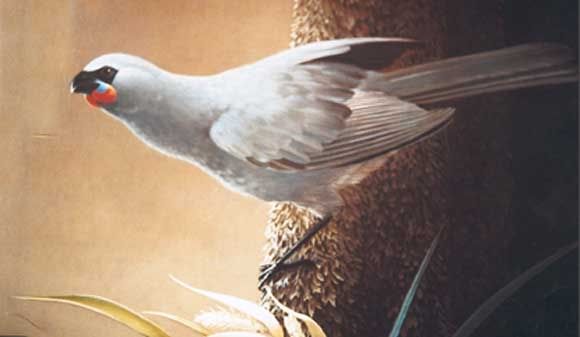 This beautfiul bird is the subject of the latest exciting rediscovery story (March 2006) in the ornithological world. Christchurch ornithological researcher Ron Nilsson believes he may have evidence that the South island subspecies still exists. It was presumed to be extinct as at January 2006. His contention is based on sound recordings made in the Puysegur Point area of Fiordland in January this year, 2006. New Zealand Department of Conservation officials remain unconvinced after listening to the recordings, but would be prepared to help in further research if a major sponsor could be found and if more collateral evidence in the form of droppings or feathers could be found. More news of this in due course on this page. The future of the other subspecies, the North Island kokako, is well assured. A healthy population exists. www.inventas.co.nz/50rarestbirds/kokako.htm |
|
|
|
Post by another specialist on Dec 4, 2008 17:06:37 GMT
|
|
|
|
Post by another specialist on Dec 4, 2008 17:27:35 GMT
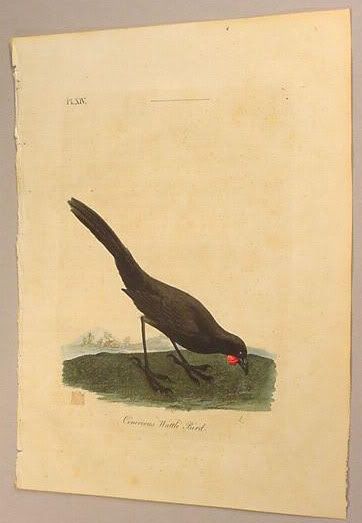 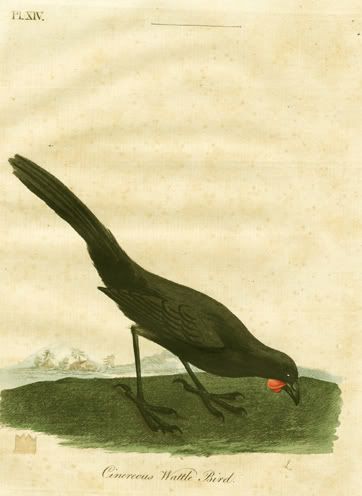 Cinereous Wattle Bird (South Island Kokako) Plate XIV: Hand coloured engraving from A General Synopsis of Birds published London, 1795. Printed on hand woven, laid paper. Plate size: 7 1/2 x 9 1/2 inches (18.5 x 24cm) approximately. Condition: good, this print has quite a lot of age toning. Text: no text included. "Latham, using Forster's material, called it the Cinereous wattle bird.", WRB Oliver. 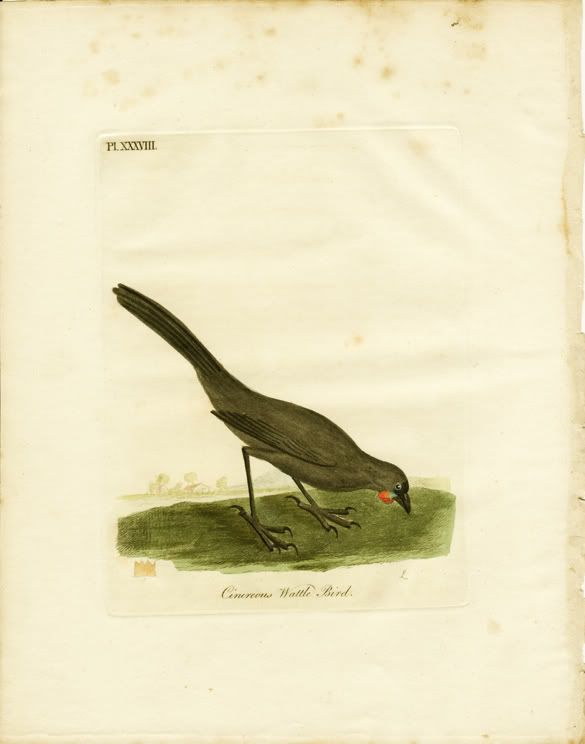 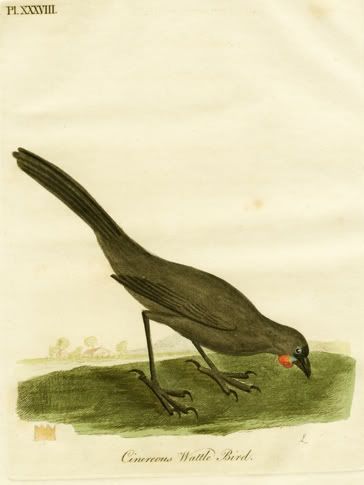 Cinereous Wattle Bird (South Island Kokako) Plate XXXVIII: Hand coloured engraving from The General History of Birds (1821-28). Plate size: 8 1/2 x 10 3/4 inches (21.7 x 27cm) approximately. Condition: good with some age toning and foxing. The foxing is found mainly in the top margin as can be seen in the larger photographs. Text: text included. "Latham, using Forster's material, called it the Cinereous wattle bird.", WRB Oliver. www.newzealandantiqueprints.co.nz/gallery/birds/latham.html |
|
Deleted
Deleted Member
Posts: 0
|
Post by Deleted on Dec 23, 2008 18:25:50 GMT
Callaeas cinerea cinerea Photo taken by myself in the Senckenberg Museum in Frankfurt a. Main / Germany.
|
|
|
|
Post by another specialist on Jul 30, 2009 19:45:02 GMT
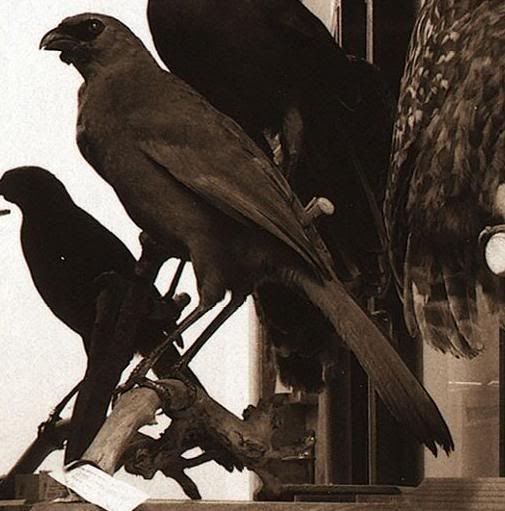 © Museum of New Zealand Te Papa Tongarewa |
|
|
|
Post by surroundx on May 12, 2012 8:22:20 GMT
|
|
|
|
Post by surroundx on May 12, 2012 8:22:48 GMT
|
|
|
|
Post by platypus on May 29, 2012 9:35:07 GMT
The South Island Kokako is not extinct - see www.greyghost.org.nzIt has only been written off by a cash straped New Zealand Department of Conservation who doesnt want to have to investigate the large number of reported sightings of this incredibly cryptic bird. |
|
|
|
Post by Melanie on May 29, 2012 12:27:00 GMT
The South Island Kokako is not extinct - see www.greyghost.org.nzIt has only been written off by a cash straped New Zealand Department of Conservation who doesnt want to have to investigate the large number of reported sightings of this incredibly cryptic bird. I think it is the same as with the Ivory-billed wood pecker. It might persist in some remote forests but as long there is no reliable report it will probably stay extinct. And even if a photographic report is not possible (what ever this means) I think an audio recording might be a good way to prove whether this bird is still exist. |
|
|
|
Post by another specialist on Sept 21, 2012 13:31:48 GMT
|
|
|
|
Post by Sebbe on Nov 27, 2013 20:23:25 GMT
|
|
|
|
Post by surroundx on Nov 30, 2013 6:01:30 GMT
If I was compiling a list of the top 10 putatively extinct taxa which are most likely to survive, the South Island kokako (Callaeas cinerea cinerea) would probably be in first position.
|
|
|
|
Post by Melanie on Jul 20, 2014 20:12:09 GMT
Evidence supporting the continued existence of populations of South Island kokako and their indicative distribution Alec Milne1 and Richard Stocker2 1Onekaka, R.D. 2, Takaka, New Zealand. 2Puramahoi, R.D. 2, Takaka, New Zealand. rv.stocker@clear.net.nz Prior to 2012, the most recent report accepted by the Ornithological Society of New Zealand's Rare Birds Committee of the South Island kokako (Callaeas cinerea) was in 1967. In 2007 the Bird Threat Ranking panel declared the species extinct. However reports of potential observations of South Island kokako continued to appear. We compiled a database of 241 reports between January 1990 and June 2012. These reports were categorised most highly if there was identification of wattles which are the most distinguishing feature of kokako. The 13 reports from the highest category were submitted to the Bird Threat Ranking panel in June 2012, who then reclassified the South Island kokako as “data deficient”. The most compelling 11 of these reports were then submitted to the Ornithological Society of New Zealand's Records Appraisal Committee (RAC). One of these reports was accepted as a South Island kokako; two were deemed to be North Island kokako. This paper presents the database, our assessment process, results, RAC response, map of reports and our conclusions.
Abstracts from the 2014 New Zealand Bird Conference, Palmerston North. (http://www.osnz.org.nz/sites/osnz.org.nz/files/publications/2014%20Abstracts.pdf)
|
|
|
|
Post by Melanie on Jul 20, 2014 20:23:54 GMT
|
|




